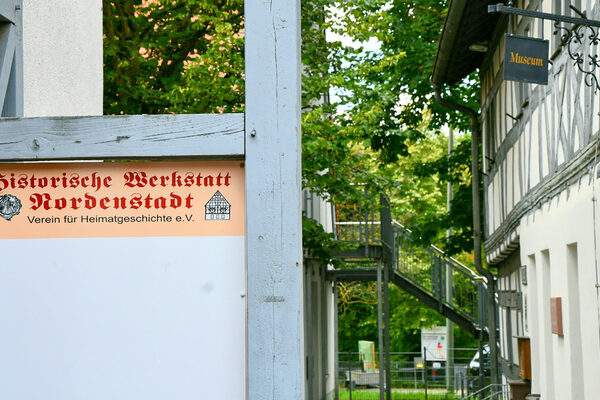Norminstatt becomes Nordenstadt
The first documented mention of Nordenstadt dates back to 950.
Early history
In a document, King Otto I (912-973) gave the vassal Count Gerung six hooves of land in the districts of Wallau, Breckenheim and Nordenstadt. However, Nordenstadt is actually much older. Archaeological finds, including a Frankish burial ground at the end of the town, prove that the area was already inhabited in the 6th century.
Development in the Middle Ages
In 950, Nordenstadt belonged to the Königssundergau, an area that belonged to the Frankish kings. The Gau was not only important geographically, but also politically and legally, and had Mechthildshausen as its center. Over the centuries, the name of the town changed several times: "Norminstatt" became "Nordinstatt", later "Norstat", "Norderstadt" and finally Nordenstadt from 1145. The name refers to the Frankish origin of the settlers and probably means "the dwelling place of the Nornin or Norin". In the Middle Ages, the region was one of the most important agricultural areas and was closely linked to religious institutions.
Destruction and reconstruction
The Thirty Years' War (1618-1648) brought devastating destruction to Nordenstadt. In 1620, the first enemy army under Marquis Spinola marched through the region. The troops plundered farms, drove off livestock and burned farms and barns. In 1635 there were only 46 inhabitants, in 1637 only 70. The entire livestock population had fallen to 28 oxen and 10 cows in 1641, and only 37 houses were still habitable. In the early 18th century, Nordenstadt began to rebuild. The farmers cultivated the fields again and made their farms flourish. In 1730, Nordenstadt had around 575 inhabitants, including four Jewish families.
The French Revolution
The French Revolution brought numerous refugees and emigrants to the "Ländchen" in the late 18th century. In 1792, imperial Austrian troops were quartered here and later French troops occupied the region. The peace of 1801 brought back a certain amount of stability, but the people of Nordenstadt had to pay off high war debts, which made economic recovery more difficult.
Jewish community in Nordenstadt
Until the 1930s, 15 Jewish families lived in Nordenstadt. After the November pogrom of 1938, many fled abroad. In 1942, 14 Nordenstadt Jews were deported and murdered. Today, 14 stainless steel steles in front of the old town hall commemorate the victims. Stumbling stones have been laid in several streets to commemorate the Jewish families and their history.
From farming village to modern municipality
From the 19th century onwards, Nordenstadt began to modernize economically and in terms of infrastructure. Industrialization and the expansion of transport routes contributed to the village's transformation from a traditional farming village to a modern community with residential and commercial areas. Especially from the middle of the 20th century, when the expansion of the highways and the proximity to the Rhine-Main airport connected the region economically, Nordenstadt played an important role in the economic life of the surrounding area. Nordenstadt was incorporated into Wiesbaden on January 1, 1977. Over the centuries, Nordenstadt developed from a small Franconian settlement into a modern district of Wiesbaden.
Historical highlight
Religious tradition and industrial progress: Nordenstadt's coat of arms symbolically combines the Bible (represented by a book) with two cogwheels, which stand for the industrial area.
